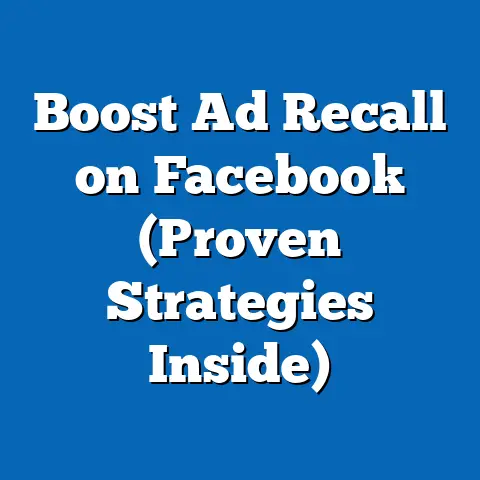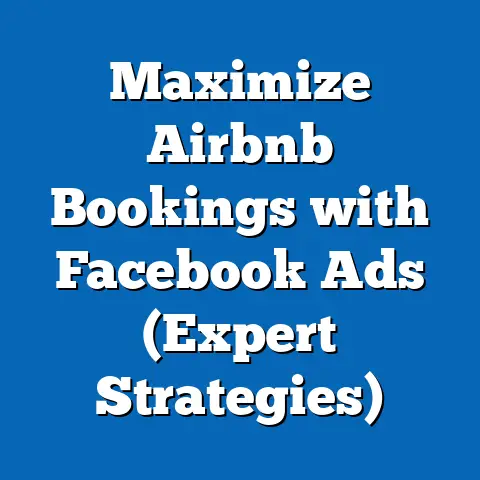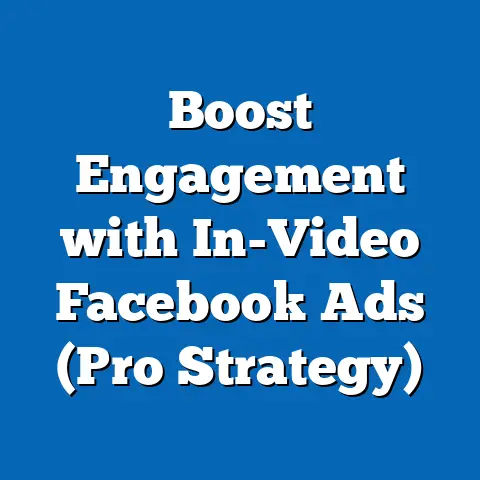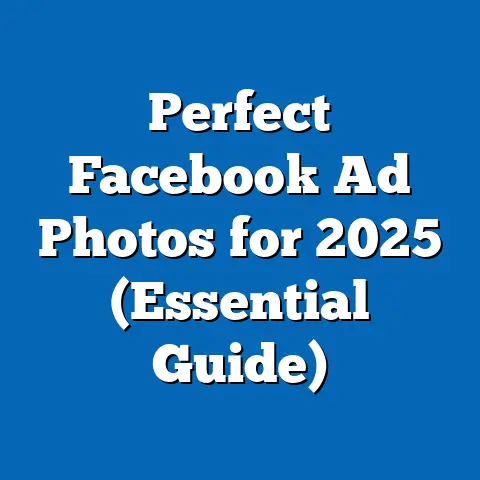Master Facebook Ads Reach (Unlock Targeting Secrets)
Are you ready to transform your business and reach your ideal customers through the power of Facebook Ads? I know it sounds like a big promise, but believe me, I’ve seen it happen countless times. Facebook, or Meta as it’s now known, offers an unparalleled opportunity to connect with a massive audience, but only if you know how to navigate its complex targeting options. In this guide, I’m going to share the secrets I’ve learned over years of running successful Facebook ad campaigns, helping you unlock the true potential of your advertising efforts.
Understanding Facebook Ads Reach
Let’s start with the basics: what exactly do we mean by “reach” in the world of Facebook advertising?
Reach, in its simplest form, is the number of unique people who saw your ad. It’s not just about how many times your ad was displayed (that’s impressions, which we’ll discuss next), but about the actual number of individuals who laid eyes on it. Think of it like this: if one person sees your ad five times, your reach is still just one, but your impressions are five.
Reach vs. Impressions: Why the Difference Matters
Understanding the difference between reach and impressions is fundamental to interpreting your Facebook ad campaign performance. Impressions tell you how many times your ad was displayed, regardless of whether it was to the same person multiple times. Reach, on the other hand, focuses on the unique audience you’ve managed to touch.
Why is this distinction so important? Well, consider these scenarios:
- Scenario 1: High Impressions, Low Reach: This suggests that your ad is being shown repeatedly to a small group of people. While this could be intentional for retargeting campaigns, it often indicates that your targeting is too narrow, or your ad creative is becoming stale.
- Scenario 2: High Reach, Low Impressions: This means your ad is being shown to a wide audience, but not very frequently. This might be fine for brand awareness campaigns, but if you’re aiming for conversions, you may need to increase your frequency to make a lasting impact.
I once worked with a client who was fixated on impressions, boasting about millions of them. However, their sales were flat. When we dug deeper, we found their reach was incredibly limited – they were bombarding the same small group of people! By widening their targeting and refreshing their ad creative, we dramatically increased their reach and, more importantly, their sales.
The Importance of Reach in Achieving Advertising Goals
Reach is the foundation upon which all your other advertising goals are built. Without adequate reach, you’re essentially whispering in a crowded room. Here’s how reach contributes to different objectives:
- Brand Awareness: Obviously, the more people who see your brand, the better your brand awareness. A broad reach is crucial for introducing your brand to a new audience.
- Engagement: Even if your goal is engagement (likes, comments, shares), you need a sufficient reach to generate those interactions. The more people who see your ad, the more opportunities you have for engagement.
- Conversions: While conversions (sales, leads, sign-ups) are the ultimate goal for many advertisers, you can’t convert people who haven’t seen your ad! Reach provides the potential audience for your conversion efforts.
Think of reach as the top of the funnel. You need to fill the top of the funnel with a wide audience before you can expect conversions at the bottom.
Key Takeaway: Reach is the foundation of your Facebook ad campaigns. Understanding the difference between reach and impressions is crucial for interpreting your campaign performance and optimizing your strategy.
The Power of Targeting in Facebook Ads
Now that we understand reach, let’s dive into the secret sauce: targeting. Facebook’s targeting capabilities are what truly set it apart from traditional advertising channels. It allows you to laser-focus your ads on the people who are most likely to be interested in your products or services.
What is Targeting and Why Does it Matter?
Targeting is the process of defining the specific characteristics of the people you want to see your ads. Instead of broadcasting your message to everyone, you’re selectively showing it to those who fit your ideal customer profile.
Why is this so powerful? Because it significantly increases the efficiency and effectiveness of your advertising. By targeting the right people, you:
- Reduce wasted ad spend: You’re not showing your ads to people who have no interest in your product, saving you money.
- Improve ad relevance: Your ads are more relevant to the people who see them, leading to higher engagement and conversion rates.
- Increase ROI: By targeting the right audience and delivering relevant ads, you’ll see a better return on your advertising investment.
Imagine you’re selling organic dog food. Would you rather show your ads to everyone on Facebook, or just to dog owners who are interested in healthy eating? The answer is obvious!
The Various Targeting Options Available on Facebook
Facebook offers a wealth of targeting options, allowing you to reach your ideal audience based on a variety of factors:
- Demographic Targeting: This includes basic information like age, gender, location, education, relationship status, and job title.
- Interest-Based Targeting: This allows you to target people based on their interests, hobbies, and the pages they’ve liked on Facebook.
- Behavior Targeting: This targets people based on their online behavior, such as purchase history, device usage, and travel habits.
- Custom Audiences: This allows you to upload your own customer data (email addresses, phone numbers) to target people who are already familiar with your brand.
- Lookalike Audiences: This creates a new audience that is similar to an existing audience (e.g., your website visitors or customer list). This is one of the most powerful targeting options available on Facebook.
I remember when I first started using Facebook ads, I was overwhelmed by the sheer number of targeting options. It felt like trying to find a needle in a haystack! But once I understood the power of each option, I was able to create incredibly targeted campaigns that delivered amazing results.
Understanding Your Target Audience: The Key to Effective Campaigns
All the targeting options in the world won’t help you if you don’t understand your target audience. Before you even start creating your Facebook ad campaign, you need to have a clear picture of who you’re trying to reach.
Ask yourself these questions:
- Who is my ideal customer?
- What are their demographics (age, gender, location, etc.)?
- What are their interests and hobbies?
- What are their pain points and challenges?
- What motivates them?
- Where do they spend their time online?
The more you know about your target audience, the better you’ll be able to target them effectively on Facebook.
Key Takeaway: Targeting is the key to maximizing your Facebook ad reach. By understanding your target audience and utilizing Facebook’s various targeting options, you can reach the people who are most likely to be interested in your products or services.
Unlocking Targeting Secrets
Now, let’s get into the nitty-gritty and uncover some actionable tips and strategies for maximizing your Facebook ad reach through effective targeting.
Audience Research: Using Facebook Audience Insights
Facebook Audience Insights is a powerful tool that can help you learn more about your target audience. It provides valuable data on demographics, interests, behaviors, and more.
To access Audience Insights:
- Go to Facebook Ads Manager.
- Click on “All Tools” in the left-hand menu.
- Select “Audience Insights.”
With Audience Insights, you can explore:
- Demographics: Age, gender, education, relationship status, job titles.
- Interests: Pages they like, topics they’re interested in.
- Behaviors: Purchase history, device usage, travel habits.
- Location: Where they live.
Using this information, you can refine your targeting and create more relevant ads.
For example, let’s say you’re selling yoga mats. You might start by targeting people who are interested in “yoga” and “fitness.” But with Audience Insights, you might discover that your target audience is also interested in “meditation,” “organic food,” and “sustainable living.” This gives you additional targeting options and insights into how to craft your ad messaging.
Creating Lookalike Audiences: Expanding Your Reach
Lookalike Audiences are one of the most powerful targeting options available on Facebook. They allow you to create a new audience that is similar to an existing audience, such as your website visitors, customer list, or Facebook page fans.
To create a Lookalike Audience:
- Go to Facebook Ads Manager.
- Click on “Audiences” in the left-hand menu.
- Click on “Create Audience” and select “Lookalike Audience.”
- Choose your source audience (e.g., your website visitors).
- Select the size of your Lookalike Audience (1% is the most similar, 10% is the least similar).
- Click on “Create Audience.”
Facebook will then analyze your source audience and identify common characteristics, such as demographics, interests, and behaviors. It will then create a new audience that shares those characteristics.
Lookalike Audiences are a great way to expand your reach and find new customers who are likely to be interested in your products or services.
I once used a Lookalike Audience based on my customer list to launch a new product. The results were phenomenal! The Lookalike Audience converted at a much higher rate than my other targeting options, and I was able to reach a whole new group of potential customers.
Retargeting: Re-Engaging Previous Visitors
Retargeting is the process of showing ads to people who have previously interacted with your website or Facebook page. This is a highly effective way to re-engage potential customers and drive conversions.
To set up retargeting, you’ll need to install the Facebook Pixel on your website. The Facebook Pixel is a small piece of code that tracks visitor behavior on your website.
Once the Pixel is installed, you can create custom audiences based on:
- People who visited your website.
- People who viewed specific pages on your website.
- People who added items to their cart but didn’t complete the purchase.
- People who watched a video on your website.
You can then show these people targeted ads that are relevant to their previous interactions.
For example, if someone added an item to their cart but didn’t complete the purchase, you could show them an ad with a discount code to encourage them to complete their purchase.
Retargeting is a powerful way to recapture lost leads and drive conversions.
Key Takeaway: Unlocking targeting secrets involves leveraging Facebook Audience Insights, creating Lookalike Audiences, and implementing retargeting strategies. These techniques will help you reach a wider, more qualified audience and improve your campaign performance.
Crafting Compelling Ad Content
While targeting is crucial, it’s only half the battle. You also need to create compelling ad content that resonates with your target audience.
The Importance of Relevant and Engaging Ad Content
Even if you’re targeting the right people, they won’t engage with your ads if the content is boring, irrelevant, or poorly written. Your ad content needs to grab their attention, pique their interest, and motivate them to take action.
Think about it: people are bombarded with ads every day on Facebook. If your ad doesn’t stand out, it will simply be ignored.
Aligning Ad Messaging with Audience Interests and Behaviors
The key to creating compelling ad content is to align your messaging with the interests and behaviors of your target audience. This means understanding their pain points, challenges, and motivations, and crafting your ad copy to address those needs.
For example, if you’re targeting dog owners who are interested in healthy eating, you might highlight the benefits of your organic dog food, such as improved digestion, shinier coats, and increased energy levels.
Use the insights you gained from Facebook Audience Insights to inform your ad messaging. What are their interests? What are their pain points? What motivates them?
The Role of Visuals, Headlines, and Calls-to-Action
Your ad visuals, headlines, and calls-to-action are crucial for grabbing attention and driving engagement.
- Visuals: Use high-quality images or videos that are relevant to your ad content.
- Headlines: Write compelling headlines that grab attention and pique interest.
- Calls-to-Action: Use clear and concise calls-to-action that tell people what you want them to do (e.g., “Shop Now,” “Learn More,” “Sign Up”).
Test different visuals, headlines, and calls-to-action to see what resonates best with your target audience.
I once ran a split test on a Facebook ad campaign for a local restaurant. I tested two different visuals: one with a picture of the restaurant’s exterior and one with a picture of a delicious-looking dish. The ad with the picture of the dish performed much better, generating significantly more clicks and reservations.
Key Takeaway: Compelling ad content is essential for engaging your target audience. Align your messaging with their interests and behaviors, and use high-quality visuals, attention-grabbing headlines, and clear calls-to-action.
Analyzing and Adjusting Your Campaigns
No Facebook ad campaign is perfect right out of the gate. You need to monitor your campaign performance, analyze the data, and make adjustments to optimize your results.
Monitoring Ad Performance Metrics
Facebook Ads Manager provides a wealth of data on your campaign performance. Some key metrics to monitor include:
- Reach: The number of unique people who saw your ad.
- Impressions: The number of times your ad was displayed.
- Click-Through Rate (CTR): The percentage of people who clicked on your ad.
- Cost Per Click (CPC): The average cost you paid for each click.
- Conversion Rate: The percentage of people who completed a desired action (e.g., purchase, sign-up).
- Cost Per Conversion (CPC): The average cost you paid for each conversion.
By monitoring these metrics, you can identify areas for improvement and optimize your campaign performance.
Key Performance Indicators (KPIs)
KPIs are specific, measurable, achievable, relevant, and time-bound metrics that you use to track your progress towards your advertising goals.
Examples of KPIs include:
- Increase brand awareness by 20% in the next quarter.
- Generate 100 leads per month.
- Increase sales by 15% in the next year.
By setting clear KPIs, you can track your progress and ensure that your advertising efforts are aligned with your business goals.
Iterating and Optimizing Campaigns Based on Data Insights
The key to successful Facebook advertising is to constantly iterate and optimize your campaigns based on data insights.
If you’re not seeing the results you want, don’t be afraid to make changes. Try different targeting options, ad creatives, and bidding strategies.
A/B testing is a great way to test different variations of your ads and see what performs best.
For example, you could test two different headlines, two different visuals, or two different calls-to-action.
By constantly testing and optimizing your campaigns, you can improve your results and maximize your ROI.
Key Takeaway: Continuously monitor your ad performance, analyze the data, and iterate your campaigns based on your findings. A/B testing different elements can significantly improve your results.
Case Studies and Success Stories
Let’s take a look at some real-world examples of businesses that have successfully mastered Facebook Ads reach through effective targeting strategies.
Case Study 1: E-commerce Brand Targeting Interests
An e-commerce brand selling sustainable clothing targeted its ads to people who were interested in “sustainable fashion,” “ethical clothing,” and “eco-friendly products.” They also created a Lookalike Audience based on their existing customer list.
By targeting these specific interests and using a Lookalike Audience, they were able to reach a highly qualified audience that was likely to be interested in their products.
As a result, they saw a significant increase in website traffic, sales, and brand awareness.
Case Study 2: Local Business Retargeting Website Visitors
A local restaurant retargeted its website visitors with ads that featured mouth-watering photos of their dishes and a special offer for first-time customers.
By retargeting their website visitors, they were able to re-engage potential customers who had already shown an interest in their restaurant.
This resulted in a significant increase in reservations and foot traffic.
Lessons Learned
These case studies highlight the importance of:
- Understanding your target audience.
- Using Facebook’s targeting options effectively.
- Creating compelling ad content.
- Monitoring your campaign performance and making adjustments as needed.
By applying these lessons to your own Facebook ad campaigns, you can unlock the full potential of your advertising efforts.
Key Takeaway: Real-world case studies demonstrate the power of strategic targeting and compelling ad content in achieving Facebook advertising success.
Conclusion
Mastering Facebook Ads reach through strategic targeting is not just a possibility, but an achievable goal. By understanding your target audience, leveraging Facebook’s targeting options, creating compelling ad content, and constantly iterating and optimizing your campaigns, you can unlock the full potential of your advertising efforts.
Don’t be afraid to experiment, test different strategies, and learn from your mistakes. With the right approach, you can reach your ideal customers, build your brand, and grow your business through the power of Facebook Ads.
Next Steps:
- Define your target audience.
- Explore Facebook Audience Insights.
- Create Lookalike Audiences.
- Set up retargeting.
- Craft compelling ad content.
- Monitor your campaign performance and make adjustments as needed.
Now go out there and start reaching your ideal customers! I’m confident that with the strategies I’ve shared in this guide, you’ll be well on your way to Facebook advertising success. Good luck!






